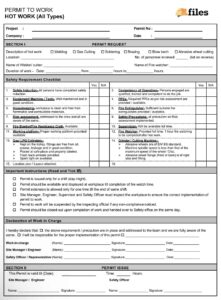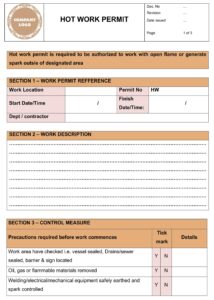The menopause transition can be a challenging time for women, and it can have a significant impact on their work lives. Hot flashes, mood swings, and difficulty concentrating are just a few of the symptoms that can make it difficult for women to perform their jobs effectively. In addition, the societal stigma surrounding menopause can make it even more difficult for women to talk to their employers about their needs. As a result, many women suffer in silence, which can lead to decreased productivity, absenteeism, and even job loss.
A menopause at work policy template can help employers create a supportive and inclusive workplace for women who are experiencing menopause. This policy can provide guidance on how to accommodate the needs of women who are experiencing menopause, and it can also help to reduce the stigma surrounding this natural life stage. There are many resources available to help employers create a menopause at work policy, including the Society for Human Resource Management (SHRM) and the AARP.
Benefits of a Menopause at Work Policy
There are many benefits to implementing a menopause at work policy. These benefits include:
- Increased productivity: Women who are experiencing menopause are more likely to be productive if they have a supportive work environment.
- Reduced absenteeism: Women who are experiencing menopause are less likely to take time off from work if they have a supportive work environment.
- Improved employee morale: Women who are experiencing menopause are more likely to be satisfied with their jobs if they have a supportive work environment.
- Reduced turnover: Women who are experiencing menopause are less likely to leave their jobs if they have a supportive work environment.
How to Implement a Menopause at Work Policy
Implementing a menopause at work policy is a relatively simple process. The following steps can help employers get started:
- Get buy-in from leadership: The first step is to get buy-in from leadership. This means getting the CEO, HR director, and other key decision-makers on board with the idea of implementing a menopause at work policy.
- Create a task force: Once you have buy-in from leadership, you can create a task force to develop the policy. This task force should include representatives from HR, employee health, and other relevant departments.
- Review existing policies: The next step is to review your existing policies and procedures to see if there are any gaps that need to be addressed. For example, you may need to add language to your sick leave policy to accommodate women who are experiencing menopause.
- Develop a new policy: Once you have reviewed your existing policies, you can start to develop a new menopause at work policy. This policy should include the following elements:
- A definition of menopause
- A list of common menopause symptoms
- Guidelines on how to accommodate the needs of women who are experiencing menopause
- A statement of the employer’s commitment to creating a supportive and inclusive workplace for women who are experiencing menopause
- Communicate the policy to employees: Once you have developed a menopause at work policy, you need to communicate it to employees. This can be done through company-wide emails, posters, and presentations.
- Train managers and supervisors: Managers and supervisors need to be trained on the menopause at work policy. This training should help them understand the policy and how to implement it in the workplace.
- Monitor the policy: Once you have implemented the menopause at work policy, you need to monitor it to ensure that it is being followed and that it is having the desired impact.
Conclusion
A menopause at work policy is a valuable tool for employers who want to create a supportive and inclusive workplace for women who are experiencing menopause. This policy can help to reduce the stigma surrounding menopause, and it can also help to accommodate the needs of women who are experiencing this natural life stage. As a result, employers can improve productivity, reduce absenteeism, and improve employee morale.
Menopause is a natural part of life, and it should not be something that women have to suffer through in silence. By implementing a menopause at work policy, employers can help to create a more supportive and inclusive workplace for women who are experiencing this transition.
FAQs
What is a menopause at work policy template?
A menopause at work policy template is a document that provides guidance to employers on how to create a supportive and inclusive workplace for women who are experiencing menopause. This policy can include information on:
- The definition of menopause
- Common menopause symptoms
- Guidelines for accommodating the needs of women who are experiencing menopause
- A statement of the employer’s commitment to creating a supportive and inclusive workplace for women who are experiencing menopause
Why is it important to have a menopause at work policy?
A menopause at work policy is valuable because it can help to:
- Reduce the stigma surrounding menopause
- Accommodate the needs of women who are experiencing menopause
- Improve productivity
- Reduce absenteeism
- Improve employee morale
What are some common elements of a menopause at work policy?
Some common elements of a menopause at work policy include:
- A definition of menopause
- A list of common menopause symptoms
- Guidelines on how to accommodate the needs of women who are experiencing menopause
- A statement of the employer’s commitment to creating a supportive and inclusive workplace for women who are experiencing menopause



